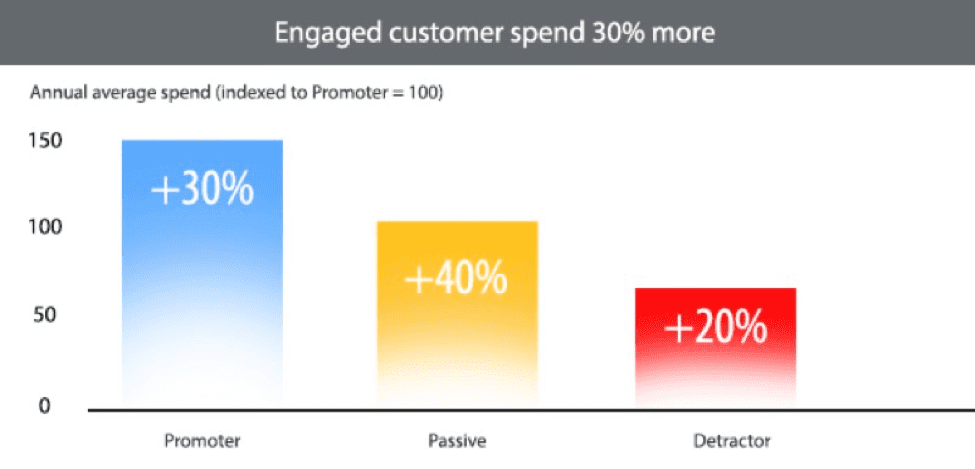The aim of multi-platform customer service is to provide customers and audiences with options on how they would like to communicate with brands
These platforms also deliver a seamless service experience for customers, regardless of what channel they may choose to use. Delivering a smooth customer experience means having to understand your customers in order to better assist them with their queries and concerns without hassle.
According to Exo Level Seamless Retail Study, 49% of consumers believed that companies should focus on integrating in-store, online, and mobile shopping channels to improve transactions. An overwhelming 89% of respondents wanted to shop for products in a manner that is most convenient for them, whether they use mobile devices, in-store transactions or online catalogs.
Multi-platform customer support services should focus on the ability to track customers’ communications and their purchase behavior across various service channels. Having a multi-platform customer support service is by far the most important asset a business can have this 2018.
Download FREE Resource – Digital marketing plan template
Our popular marketing planning template built on the Smart Insights RACE planning system.
Access the Free digital marketing plan template
Why have a multi-platform customer service?
1. Self-service option
Microsoft’s Global State of Multichannel Customer Service Report has found that more than 90% of all consumers expect a brand or organization to offer a self-service support portal or frequently asked questions (FAQ) page to cater to their simple concerns. Having a self-service option allows customers to get the answers and assistance they need, whenever they need it, without having to consult an operator.
Customer expectations change over time but the one constant demand is for customer support services to be available 24/7. Therefore, each time you add another channel for them to reach your brand, the availability of your customer service also increases and the more satisfied your customers will be with your brand’s ability to please customers.
Offering a self-service option proves to be more convenient for customers as well. Not all customers have the time to sit and talk to an available agent for a concern that may only take half the talking time. This option would make solving the problem quickly as well. With customers wanting to save time fixing something, it’s best to have this option open.
In Forrester’s consumer survey about channel usage for customer service, shows that the use of help/FAQ pages on a company’s website for customer service increased from 67% to 76%. To know more about Forrester’s survey, you can visit their post on the importance of good self-service.
Most consumers expect service providers to have their support lines open at all times and a self-service option gives exactly that. However, having a self-service option is not enough. Creating a well-constructed self-service area comprised of searchable support portals that are easy to navigate and are equipped to escalate customers’ concern when they need it is even better. It assures that your service content is relevant to your customers to show them that you understand their needs.
2. Consistent support experience
Customers can reach out to your customer service in a variety of ways — email, web, mobile, social media, live chat, and phone call. Whatever way they choose to contact your business for help is called a channel and the main intention of these is to maximize the use of all channels to improve engagement with the customers. How well these channels are organized and connected plays a significant role in the customer’s journey. Providing them with a consistent support experience is fundamental to retaining and gaining customers. To further improve this feature, keeping tabs on the customers’ history of activities can aid how to handle them in the future.
A unified view of customer’s history is essential for your customer support team; it is also a must for businesses to keep important details to cater every customer’s needs. In the research done by Marketing Interactive, they have discovered that 56.6% businesses still can’t be contacted through social media, only 12.9% businesses offer a customer history and service record in mobile apps, and 76.3% businesses’ existing CRM systems can’t track customers’ social media interaction.

This shows that many still have not considered the usefulness of social media in customer support services and not just brand marketing.
In running a successful customer support service, it is best to consider what your market’s preferences are to reach out to them and create a better customer-client relationship with them. There are various software applications that can help your customer support services unify your conversations across all channels putting everything you know about them through how you cater to their needs.
3. Personal and Proactive Social Customer Support
Social media has now become the face of every business not only for branding or marketing but as a customer service tool as well. Your marketing team could be doing wonders in building your social media page but a single dissatisfied customer can harm your company’s reputation with a simple review. Thus, it is essential to provide a personal and proactive social customer service via multiple touch points to avoid these circumstances.
Bain & Company research has shown that when companies engage and respond to customer service requests over social media, those customers end up spending 20% to 40% more with the company. On the other hand, poor social customer service will stop 60% of customers from doing business with a company.

This shows that it is necessary for companies to have a process in place to quickly recognize, channelize, prioritize, respond, and address customer service issues on your preferred social media channel.
Customers notice and appreciate when companies actively participate in social media and answer their queries instantly. They expect service providers to answer their questions in no more than 30-45 minutes. Making it possible for them to reach out to you through this channel increases their chances on patronizing your brand for they believe you understand their concerns and adjust to their convenience.
Great customer support services intend to support a long-term relationship through trust and people-oriented growth that will profit your business and assure satisfaction. Offering a quick and easy helpdesk with whatever channel your customer chooses is important to keep them happy and loyal to your brand.
Thanks to Donna Kay Santos for her thoughts and opinions in this post. Donna works as a content writer for
New Media services (NMS), a leader in Global Corporate Outsourcing and Custom Business Solutions. She is an expert in writing different contents for all business sizes. She writes business promotions, advertisements, blogs, newsletters, press releases and web contents. You can follower her on
Twitter, or connect with her on
LinkedIn.









